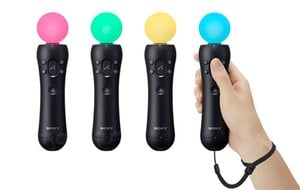
Yoshida likened the current crop of motion controls — including PlayStation Move and Micrsoft's Kinect — to the very first generation of video game consoles.
As far as Im concerned, the motion control of today is like the 8-bit phase of video games, Yoshida told a panel at GamesCom last week.
Shuhei's sentiment was echoed by fellow Sony employee, Mick Hocking:
I think weve just only started exploring the possibilities of motion control. Move has given us the first accurate device use for motion control, he said.
Im also interested in the possibilities of virtual reality and tracking every part of my body. There are loads of things we can do with motion control. Maybe well create objects holographicly and interact with them via motion controllers."
We'd be surprised if any of the three platform holders dropped motion control support next generation, and it's going to be interesting to see which angle they take. We wouldn't be surprised if Sony overhauled its current solution, replacing the current PlayStation Eye with a full body-tracking solution in addition to a Move-like controller.
The problem is expense and versatility. Few would argue that Kinect is very good at very specific genres — dancing and fitness in particular — and the same is true of Move. But the more technology you throw at a problem, the more expensive the solution becomes. And of course, the higher the costs, the harder it becomes to drive an install base.





Comments 0
Wow, no comments yet... why not be the first?
Leave A Comment
Hold on there, you need to login to post a comment...